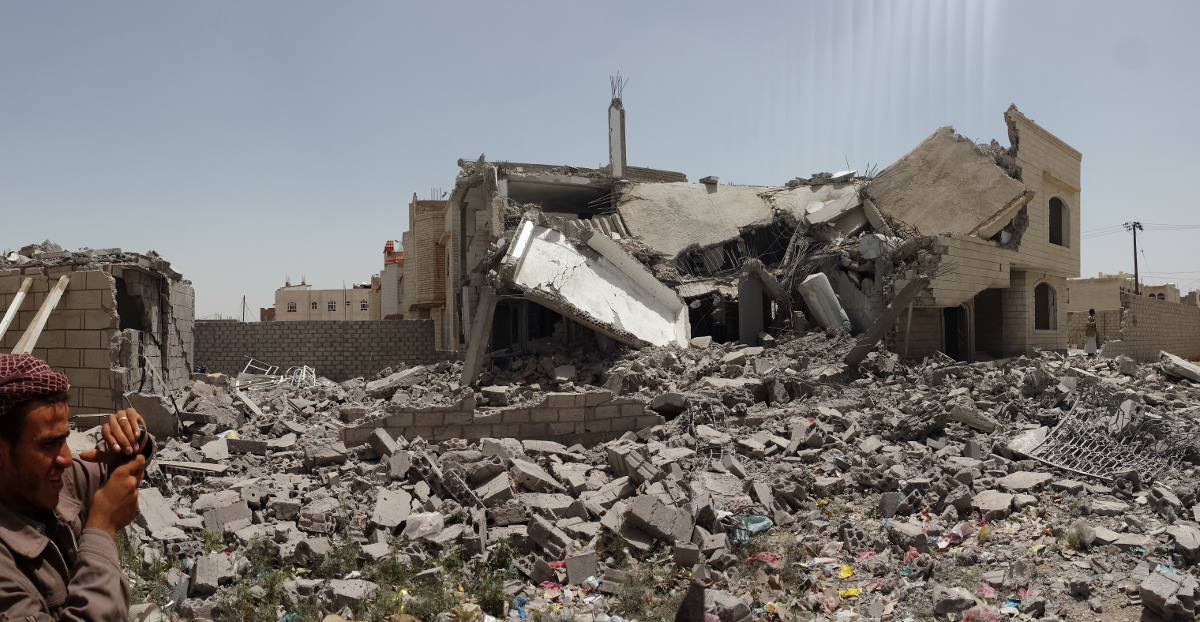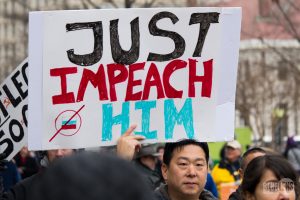by Paul R. Pillar
We are seeing today in Yemen a demonstration of how easily a supposedly limited U.S. involvement in an armed conflict becomes less limited, and how such involvement creates new enemies of the United States.
The deleterious entanglement of the United States in civil war in Yemen was already a major problem even before the events of the past week. The United States has associated itself with, and been providing indirect support to, the Saudi-led military intervention in Yemen. That intervention, especially through largely indiscriminate aerial bombardment, has been responsible for most of the severe civilian suffering in Yemen. Since the Saudi air assault began last year, civilian casualties have been averaging 13 per day. Total civilian deaths in the war are approaching 4,000, with many more injured and still more homeless. The Saudi role in causing most of this damage and the U.S. role in facilitating it certainly undercut any criticism by those governments of Russia’s role in causing civilian suffering in Syria.
The newest step in the U.S. entanglement in Yemen is the direct application of U.S. firepower. On Thursday the United States fired cruise missiles at radar installations in territory controlled by the Yemeni rebels known as Houthis. The missile strikes were in response to a couple of unsuccessful firings from that territory of missiles evidently aimed at a U.S. warship. The leadership of the Houthi movement denies involvement in the targeting of the U.S. ship. Whether or not there is any validity to that denial, the result is the same: U.S. involvement in the Yemeni civil war has escalated. That involvement previously consisted of behind-the-scenes but nonetheless obvious support to the Saudi offensive. Now it includes the U.S. Navy directly firing its weapons at Yemeni targets.
Several aspects of the logic of war often cause external intervention to escalate beyond what was originally intended or desired. One involves making additional effort to achieve objectives that were declared at the time of the original intervention but have still not been achieved. Another involves responses to escalation on the other side that in turn was a a response to the original intervention.
Yet another, very much in play in this week’s events, involves the desire to protect and defend one’s own forces. The Pentagon described this week’s cruise missile strikes as retaliation necessary to protect U.S. vessels and their crews that were legitimately operating in the waterways of the Bab el Mandeb strait and the Red Sea. That is a valid explanation, but it carries little weight with Yemenis who simply see the United States firing deadly weapons at their nation. The Pentagon said nothing about human casualties at the receiving end of the cruise missile strikes, but as Micah Zenko notes, the last time that the United States fired cruise missiles at a target in Yemen (in 2009), 41 civilians were killed.
The Houthi advances during the past couple of years are only part of a long and complicated story of armed strife in Yemen, the poorest of Middle Eastern countries. The issues and lines of conflict have involved contests for resources among different regions and tribes. There also has been a sectarian dimension to the internal warfare: the Houthis are champions of Zaidi Shias, a large minority in a country with a Sunni majority. The identities of the contenders in the current round of civil warfare do not give any reason for the United States to be more against the side of the Houthis than for them. The Houthis are allied with longtime president Ali Abdullah Saleh, who was America’s man in Sana before he stepped down in 2012, amid popular protests and an assassination attempt that left him severely injured. The most threatening anti-U.S. element in Yemen has been Al Qaeda in the Arabian Peninsula, which is on the Sunni side of the sectarian divide; the Houthis are among the staunchest opponents of AQAP.
In short, the United States did not previously—before getting involved in this war—have an enemy in the Houthis. Now, as a result of getting involved in the war, it does.
The usually cited rationale for opposing the Houthis is a relationship with Iran. The Iranians evidently have supplied the Houthis with some munitions, although most of the Houthis’ arms have come from within gun-saturated Yemen itself. That’s about as far as the relationship goes, beyond the partial religious affinity that may have been one of the motives for Iran giving some aid. The Houthis are not proxies of Iran. When they seized the capital city of Sana it reportedly was against the advice of Iran—which in that respect was acting as a force for restraint, not destabilization. In any event, whatever aid Iran may have given the Houthis is dwarfed in size and destructive impact by the direct Saudi armed intervention.
What is being demonstrated in Yemen, besides being a serious problem in its own right, carries important lessons for policy toward internal conflict and external interventions in other places, such as Syria. One lesson is that supposedly limited interventions are likely—for reasons that include the need to protect one’s own service members—to become much less limited. (This dimension is routinely overlooked in discussions of establishing a no-fly zone or “safe zone” in Syria.) Another lesson is that U.S. military interventions in this region have created more adversaries of the United States than they have eliminated.
Yet another lesson concerns the folly of defining Middle Eastern politics in terms of some grand alignment of opposing forces and then getting directly involved in any conflict that can be construed as being a clash of such forces. Even if the Yemeni civil war were a front in some kind of Iranian-led regional offensive—and as noted above, it isn’t—getting dragged into that war is less likely to serve U.S. interests than Iranian ones. Letting its regional rival Saudi Arabia bleed in the quagmire that the Saudi intervention has produced may have been another motive for whatever aid Iran has given the Houthis. There certainly is no advantage for the United States in being involved as well.
This article was first published by the National Interest and was reprinted here with permission. Copyright The National Interest.






The USA are making cajoling acts to reassure the Saudis of its loyalty while stabbing it in the back. In the last few years the US policy toward Saudi Arabia has been one of systematic undermining with various back stabbings. The main stab was the Iran nuclear that Saudi Arabia , together to Israel were staunchly opposed to.
Then came the Yemen war where the USA pushed the Saudis who hoped Pakistan, Egypt and the USA would ensure a victory. Not only it did not happen, but Saudis got stuck in a expensive quagmire that further tarnished their reputation. The last stab was the law that allows Americans to sue Saudi Arabia over 9/11.
The next looming stabbing is the peace deal in Syria where Bashar al Assad, the figure the Saudis hate the most, will remain in power in Syria while the Saudis backed terrorists will be annihilated.
It was necessary for the US to make a symbolic move to compensate for that coming shock, thus the killing of a few Houthis in Yemen.
In order to understand the severity of Saudi crimes in Yemen, to which the United States has allied herself, mention should also be made of the Saudi bombing of a funeral in Sanaa on 9 October 2016, which killed more than 150 people, and wounded more than 525. The Saudis bombed a hall where the funeral of the father of a Yemeni minister was taking place. The deadly attack was deliberate, as there were two successive attacks, which showed total disregard for human life. At first, the Saudis denied their involvement only to confirm it later when there was clear evidence of Saudi bombing. Sanaa mayor Abdel Qader Hilal was among those killed. According to UN figures, more than 6,700 people – most of them civilians – have been killed in Yemen. Instead of cutting off arms sales to the Saudis and condemning them for war crimes, the US now gets more deeply involved in the atrocity in Yemen.
Can’t fully comprehend what is the real USA. objective In instigating all these dreadful and frightfully expensive war conflicts .
At home infrastructures are crumpling away,povery and homeless. is increasing yet billions will be wasted away.
Sad!
Affzaal, the real objective has been access to oil and profits from the military-industrial complex. You are right that these USA-instigated wars do not serve the real interests of the American people.
The real US government’s objective is mandated by the neocons and their wealthy Zionist supporters for providing a free range field in the ME for a tiny state in order for Israel to complete its ultimate objective of expanding from Euphrates to Nile! The issue of oil supply has never been an issue except the Saudi oil embargo in 1973.
The 6-7 major oil companies in the USA and EU have had exclusive contracts and access to the oil from every country in the ME and NA since WWII. There was a bump in the road for these companies because of the revolution in Iran but the Saudis bumped their production from 4 MB/day to 6MB/day making up for the short comings from Iran.